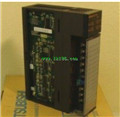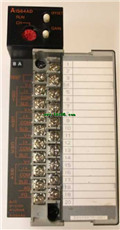A1S64TCTRT PDF catalog MITSUBISHI Temperature control module A1S64TCTRT datasheet PDF datasheet
Product model: A1S64TCTRT
Name: Temperature control module
Brand: MITSUBISHI
Sort: PDF datasheet
File language: English
Download link: MITSUBISHI A1S64TCTRT PDF datasheet
Pulse input: DC input.
Default input: DC input.
Count range: 0~16777215.
Number of stations: 4 stops.
Station type: remote equipment station.
Configuration of master / local station,
In addition to the other site network with different CC-Link in addition to the main station and the remote station configuration can also be the main station and the local station configuration MITSUBISHI Temperature control module PDF datasheet A1S64TCTRT
A local PLC can communicate with the master station PLC and other remote workstations. Output type: transistor output, drain type.
Output points: 8 points.
OFF leakage current: 0.1mA.
Output protection function.
Rated load voltage / current: DC24V/DC24V/0.1A.
External connection: 2 wire.
Sensor connector type (E-CON type) MITSUBISHI Temperature control module PDF datasheet.
Using industry standard E-CON type.
Simple wiring through sensor connector.
When installing the module can choose to use the DIN guide rail or screw mounting.
3 wire sensor input. 32 point connector 40 pin connector for welding.Input type: DC input, positive common end.
Input points: 16 points.
Enter the response time: 1.5ms the following.
Rated input voltage / current: DC24V/5mA.
Output form: transistor output, leakage type MITSUBISHI Temperature control module PDF datasheet.
Output points: 16 points.
OFF leakage current: 0.1mA.
Output protection function: No.
Rated load voltage / current: DC24V/0.1A.
External connection: 1 line /1 line type A1S64TCTRT PDF datasheet.
Fast connector type.
Simple wiring through quick connector.
Can be installed along the 6 direction.
MITSUBISHI PLC program simulation debugging
The basic idea of program simulation debugging is,
In order to facilitate the form of simulation to generate the actual state of the scene,
Create the necessary environmental conditions for the operation of the program A1S64TCTRT PDF datasheet.
Depending on the way the field signals are generated,
The simulation debugging has two forms of hardware simulation and software simulation A1S64TCTRT PDF datasheet. 8 slots.
No need to install power.
For QnA/A series.
Switch volume control is designed to,
According to the current input combination of the switch quantity and the history of the input sequence,
So that PLC generates the corresponding switching output,
In order to make the system work in a certain order.
So, sometimes also known as the order control.
And sequential control is divided into manual, semi-automatic or automatic.
And the control principle is decentralized, centralized and hybrid control three.
Each scanning process. Focus on the input signal sampling. Focus on the output signal to refresh.
Input refresh process. When the input port is closed,
Program in the implementation phase, the input end of a new state, the new state can not be read.
Only when the program is scanned, the new state is read.
A scan cycle is divided into the input sample, the program execution, the output refresh.
The contents of the component image register are changed with the change of the execution of the program.
The length of the scan cycle is determined by the three.
CPU the speed of executing instructions.
Time of instruction.
Instruction count.
Due to the adoption of centralized sampling.
Centralized output mode.
There exist input / output hyssteresis phenomena, i A1S64TCTRT PDF catalog. e., the input / output response delay.
System program memory for storing system program,
Including management procedures, monitoring procedures, as well as the user program tto do the compiler to compile the process of interpretation MITSUBISHI Temperature control module PDF datasheet.
Read only memory. Manufacturers use, content can not be changed, power does not disappear.
Default input: DC input.
Count range: 0~16777215.
Number of stations: 4 stops.
Station type: remote equipment station.
Configuration of master / local station,
In addition to the other site network with different CC-Link in addition to the main station and the remote station configuration can also be the main station and the local station configuration MITSUBISHI Temperature control module PDF datasheet A1S64TCTRT
A local PLC can communicate with the master station PLC and other remote workstations. Output type: transistor output, drain type.
Output points: 8 points.
OFF leakage current: 0.1mA.
Output protection function.
Rated load voltage / current: DC24V/DC24V/0.1A.
External connection: 2 wire.
Sensor connector type (E-CON type) MITSUBISHI Temperature control module PDF datasheet.
Using industry standard E-CON type.
Simple wiring through sensor connector.
When installing the module can choose to use the DIN guide rail or screw mounting.
3 wire sensor input. 32 point connector 40 pin connector for welding.Input type: DC input, positive common end.
Input points: 16 points.
Enter the response time: 1.5ms the following.
Rated input voltage / current: DC24V/5mA.
Output form: transistor output, leakage type MITSUBISHI Temperature control module PDF datasheet.
Output points: 16 points.
OFF leakage current: 0.1mA.
Output protection function: No.
Rated load voltage / current: DC24V/0.1A.
External connection: 1 line /1 line type A1S64TCTRT PDF datasheet.
Fast connector type.
Simple wiring through quick connector.
Can be installed along the 6 direction.
MITSUBISHI PLC program simulation debugging
The basic idea of program simulation debugging is,
In order to facilitate the form of simulation to generate the actual state of the scene,
Create the necessary environmental conditions for the operation of the program A1S64TCTRT PDF datasheet.
Depending on the way the field signals are generated,
The simulation debugging has two forms of hardware simulation and software simulation A1S64TCTRT PDF datasheet. 8 slots.
No need to install power.
For QnA/A series.
Switch volume control is designed to,
According to the current input combination of the switch quantity and the history of the input sequence,
So that PLC generates the corresponding switching output,
In order to make the system work in a certain order.
So, sometimes also known as the order control.
And sequential control is divided into manual, semi-automatic or automatic.
And the control principle is decentralized, centralized and hybrid control three.
Each scanning process. Focus on the input signal sampling. Focus on the output signal to refresh.
Input refresh process. When the input port is closed,
Program in the implementation phase, the input end of a new state, the new state can not be read.
Only when the program is scanned, the new state is read.
A scan cycle is divided into the input sample, the program execution, the output refresh.
The contents of the component image register are changed with the change of the execution of the program.
The length of the scan cycle is determined by the three.
CPU the speed of executing instructions.
Time of instruction.
Instruction count.
Due to the adoption of centralized sampling.
Centralized output mode.
There exist input / output hyssteresis phenomena, i A1S64TCTRT PDF catalog. e., the input / output response delay.
System program memory for storing system program,
Including management procedures, monitoring procedures, as well as the user program tto do the compiler to compile the process of interpretation MITSUBISHI Temperature control module PDF datasheet.
Read only memory. Manufacturers use, content can not be changed, power does not disappear.
Related products
MITSUBISHI
Temperature control module
A1S64TCRT-S1

Numer of channels: 4 channels.
Sensing
MITSUBISHI
Temperature control module
A1S64TCTT-S1

Numer of channels: 4 channels.
Sensing
MITSUBISHI
Temperature control module
A1S64TCTTBW-S1

Numer of channels: 4 channels.
Sensing
MITSUBISHI
Analog input module
A1S64AD

4 channel analog input module.
A1S64AD a
